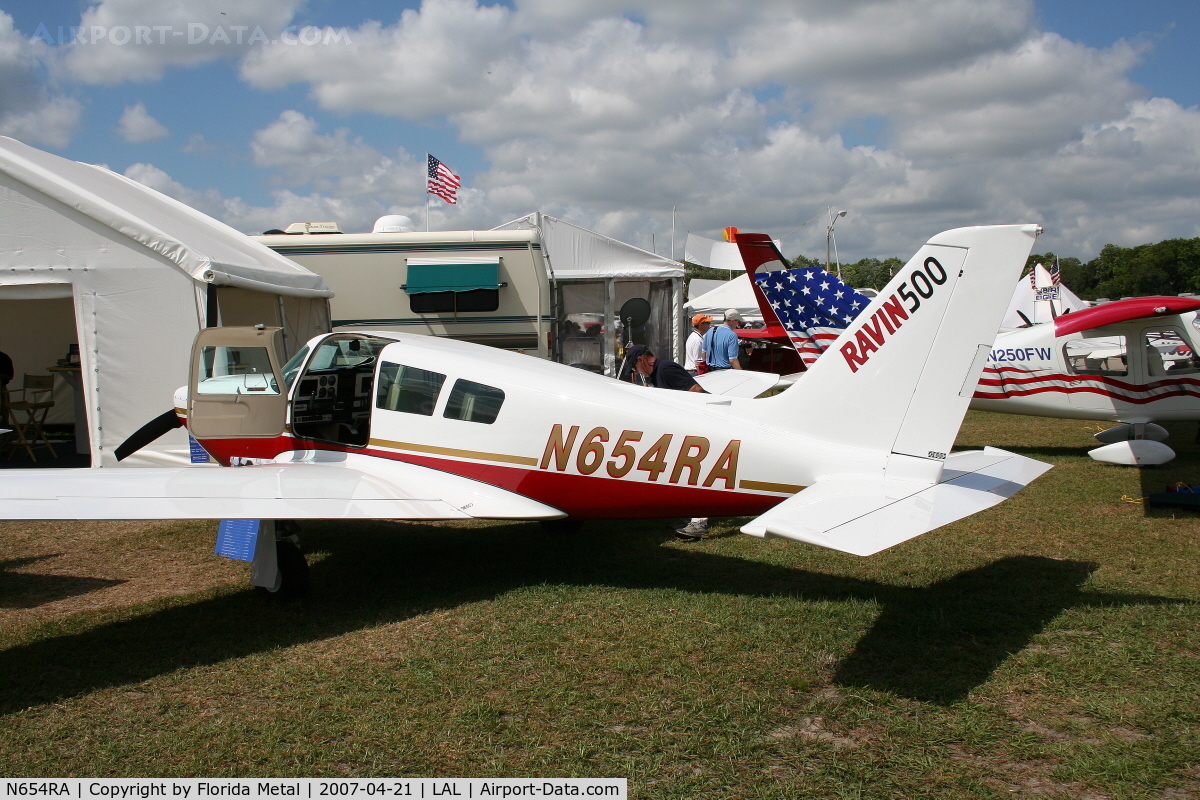Kit Planes (Experimental)

There is a sharp dichotomy between experimental and certified aircraft. With a certified airplane, you have consistent construction techiniques and standards. Planes built from kits run a spectrum from more precise and detailed than factory built planes to sloppy surface joins and uneven surfaces.
The FAA requires kit planes to have "EXPERIMENTAL" prominently displayed and other regulations which slight these machines and tend to make the public wary. On the other hand, the FAA is more hands-off allowing equipment, particularly avionics, which is newer and less expensive not requiring TSO. If you build the plane yourself, the FAA says you're qualified to do the annual inspections yourself, but even if you didn't, any A&P can do the annual for you -- you don't need to go to a IA.
These aircraft also act as a kind of safety valve to let off steam for the flying community. It lets people try out new materials, technology and designs and skips the certification step which is prohibitively expensive for all but the biggest manufacturers.
Above is a Velocity XL-RG, which incorporates a lot of recent improvements. It has a composite (mostly fiberglass) body, a rear 'pusher' prop, and canard winglets instead of a tail.
The composite body is a lot more slippery and produces less drag. The Ravin (below) is very close to a duplicate of a discontinued certified aircraft (the Piper Comanche); however, replacing the metal skin with all those rivets for a composite structure resulted in huge gains in lift and speed. The first commercial passenger aircraft are starting to be made with composite instead of aluminum bodies.
The pusher prop gives the lifting surfaces of the wings smoother air to work with. It's an interesting concept which isn't very popular yet because, I think, of the radical balancing changes needed to put that heavy engine in the back of the plane.
Finally, the canards replace a tail -- a tail pushes down on the back of the plane partially negating lift from the wings. A canard instead lifts the front of the plane adding to the lift from the wings. Flying too slow on either will cause the nose to drop and hopefully an increase in airspeed recovering from the stall. The cost in complexity to losing the tail is that the rudder needs to be split into two and run to the tip of each wing -- not a huge problem, but another point of failure in control surfaces is never a good thing.
The fairly new Ravin below is almost identical to the old Piper Comanche with a composite body and some of the after-market improvements built-in -- particularly the wing-roots and retracted landing gear produce less drag. It has the same Marine flat-top look and the only way to tell them apart from a distance is that the door is on the left side instead of the right.
Flying it reveals more changes. It cruises at 40mph faster than the Comanche and has 160g fuel capacity (two tanks in each wing) giving it absurdly long legs -- 2000nm. Of course, shorter hops with less fuel means you can haul more passengers/cargo.
Van's RV series of planes is wildly popular. It's a metal 'spam-can' with no significant changes from traditional single engine aircraft like a Piper or Cessna -- from a distance, you might guess it to be a Grumman Tiger or Cheetah.

The differences are less obvious. First, they fly faster and farther with a similar engine, and second is the price.
The affordability of kit planes (even if someone else builds it) is not immediately apparent. They are, for the most part, newer planes. Glancing at trade-a-plane's listings for Tigers, I can find one for under $40k -- from 1979. For a 2005 Tiger, the price is $129k. For Van's RV's VFR bird from 2003 the price is under $50k with prices going up depending on the avionics installed.
One of the hidden costs for a kit plane is insurance. A neighbor and pilot has a couple experimental planes which he just can't afford to insure. He told me that for what they want for insurance, he could buy another plane every two years. He does primarily use them for acrobatics, which is likely a factor :)
The fact is that the aviation industry is very safety conscious and conservative. Canards have been around since Rutan's designs in the 70's -- and technically the Wright brothers original plane was a canard bi-plane design.
For really weird, I invite you to check out the Custer Channel Wing. It looks like a pusher, and is to some degree, but the important part of the design is rather that it pulls air over the wing channels to produce lift. Weird looking, but apparently it worked.


Top is a pic from the Mid-Atlantic Air Museum where the 5 person prototype is being restored. Just below that is a shot of an earlier model tethered to a pole and levitating from the lift produced by air being pulled over the wing instead of airspeed of the craft.
Somehow, after over 60 years years, it's still a contentious topic. As near as I can tell, it looks like the numbers Willard Custer was showing to people were literally unbelievable and his disdain for the engineers who questioned him didn't help. This coupled with financial issues culminating with a stock sale which was evidently not according to the rules for the stock exchange doomed the fledgling company.
There are some drawings about how this concept might be used for a single engine aircraft, but it seems like it relies on a twin engine design, which is also a hard sell for a first time design. Still, it looks pretty cool. I'd love to see one fly.
Labels: flight


0 Comments:
Post a Comment
Subscribe to Post Comments [Atom]
<< Home